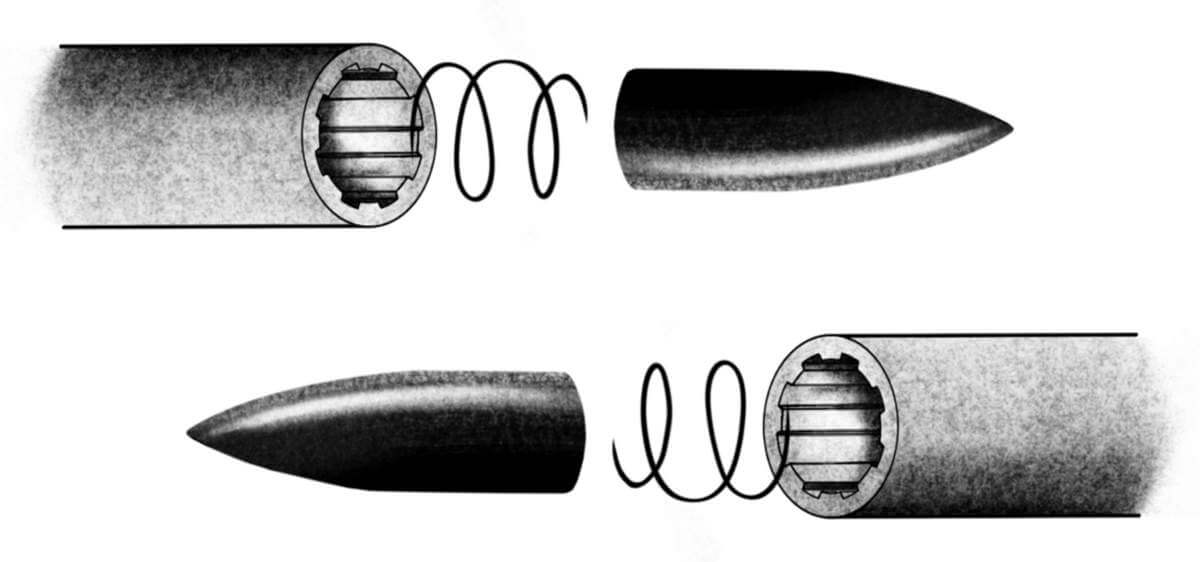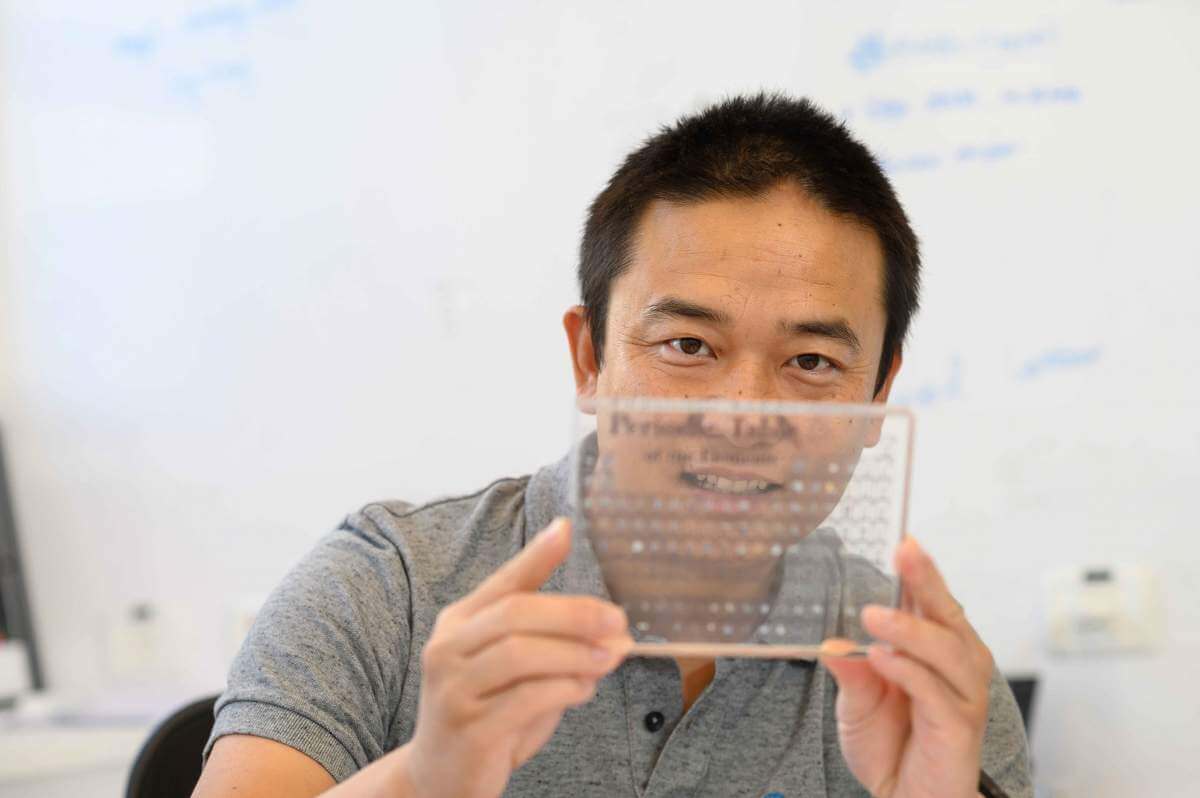It started with very strange experimental results, continued with a new physical theory about the behavior of photons, and in the future may improve our smartphone screens and enable faster data communication

OLED screens revolutionized the field of home electronics. These transparent, thin, flexible and cost-effective displays, which among other things are characteristic of smart phones, are superior in several aspects to LCD or plasma screens. However, although they are considered more economical in electricity, they are still quite wasteful: about half of the light they produce goes down the drain due to a limitation that until now was considered to be due to the physical properties of light, and therefore unavoidable. New research, led by Weizmann Institute of Science scientists, may change the picture in all respects. A new method, developed by Prof. Binghai Yan from the Department of Condensed Matter Physics and his research colleagues, allows controlling an important feature of light and thus doubling the brightness of OLED screens or, alternatively, greatly improving their energy efficiency. Moreover, the new method may allow faster data communication.
To understand the waste of light that occurs even in the most advanced screens on the market, one must first dwell on a basic natural phenomenon known as "chirality". In biology and chemistry, chirality refers to molecules that are mirror images of each other, that is, they are chemically identical, but differ in their spatial structure and cannot be placed so that they overlap each other - just like the palm of our right hand and the palm of our left hand (the concept of chirality originates from the Greek word meaning " Hand"). Two identical but chiral molecules may act in completely different ways. For example, the aspartame molecule is known to be a sweetener, while its chiral counterpart is not a sweetener at all. In the pharmaceutical industry there are chiral molecules, only one version of which heals, while the other version is at best useless, and sometimes even harmful. In physics, however, chirality refers to the rotation of particles relative to their axis of motion. That is, when photons or electrons move through space, they also rotate around their axis. When the rotation is with the direction of their movement, like a gun bullet, the chirality of the particles is right-handed; When it is in the opposite direction, their chirality is left-handed.

Interestingly, the different types of chirality - physical and biochemical - correspond with each other: for example, it is now known that the geometrical chirality of organic molecules also determines the chirality of particles passing through them.
And what about chirality for smartphones? Well, OLED screens are coated with a transparent outer layer made of a chiral material that filters light particles (photons) according to their chirality. This filtering is necessary to neutralize ambient light, which includes photons with both right and left chirality, and therefore may lower the contrast of the screen and make it even more difficult to view it in daylight. This filtering layer is indeed essential for the operation of light display systems - try to navigate with your smartphone at noon without it - but it is wasteful, since the chirality of about half of the photons produced by the device does not match that of the outer layer and therefore they do not reach us.
""We discovered an interesting unity between different aspects of chirality, which are seemingly disconnected from each other: the structural geometry of a material, the chirality of an electron stream, and now also the chirality of light"
In the new study, Prof. Yan and his team present an effective method for controlling the chirality of photons by controlling the flow of electrons - something that until now was considered impossible. The way to achieve this is through OLED components that emit light in two opposite directions at the same time: forward, to the end user, and backward, to a surface coated with a chiral polymer installed on the back of the displays. In this way, half of the produced light will pass through the outer layer without interruption, as is the case today, but the rest of the light will not be wasted: it will hit the layer on the back of the display and it will reverse its chirality and allow it to reach us. But how does the polymer inverter on the back of the device change the chirality of the photons?
Strange findings - and inevitable
Well, the ability to reverse the chirality of the photons began with very strange experimental results by Dr. Li Van, then a postdoctoral researcher at Linköping University in Sweden. "These findings contradicted everything that was known in the field," recalls Prof. Jan. "Other scientists found it difficult to believe the results. They said that something must have gone wrong in the experiments."
Contrary to what was known at the time, Dr. Van and his supervisor at the time, Prof. Alasdair Campbell, showed that they could reverse the chirality of an electron stream by reversing the polarity of a battery that produces an electric current. Prof. Campbell was convinced that they had discovered something important, but he died in 2021, without finding a theoretical explanation for the strange experimental results. After his death, Dr. Van contacted Prof. Yan, after watching a lecture on the Internet, in which Prof. Yan explains through quantum physics how the chirality of a material determines the chirality of an electron stream.
Following Dr. Van's appeal, Prof. Yan began to analyze the strange experimental findings with two other scientists: Dr. Yizhou Liu from the Department of Condensed Matter Physics at the Institute and Prof. Matthew G. Puchter from Imperial College London. Thanks to these findings, Prof. Yan expanded his theory on chirality and showed how these are inevitable results of the theory he himself developed. These new discoveries paved the way for the scientists to control the chirality of the light emitted by an electron stream: all they had to do was to use a chiral polymer that allows control of the chirality of the electron stream and consequently also that of the photon stream.
"We discovered an interesting unity between different aspects of chirality, which are seemingly disconnected from each other: the structural geometry of a material, the chirality of an electron stream, and now also the chirality of light," Prof. Jan summarizes the new research.
Beyond the production of more efficient screens, the research findings can dramatically improve the field of digital data transmission through the creation of optical switches that will work at a much higher speed than mechanical switches. In addition, the results of the study indicate the need to update the textbooks regarding chirality.
The fact that Prof. Yan came to these discoveries precisely at the Weizmann Institute has a personal meaning for him. Prof. Yan was born in China and came to Israel after a stay in the United States and Germany as a post-doctoral researcher. Inspired by a 2011 study by Prof. Ron Naaman from the Institute, Prof. Yan began to delve deeper into the interrelationships between different types of chirality. In 2017, after he had already joined the faculty of the institute and moved to Israel with his wife and two children, the token fell to him, and now he is a colleague of Prof. Naaman - the one who ignited his interest in Israelis in the first place. "It's closing a circle for me," said Prof. Jan, "and it also has an added value: I can, from time to time, jump to Ron and drink coffee together while talking about chirality."
More of the topic in Hayadan:
